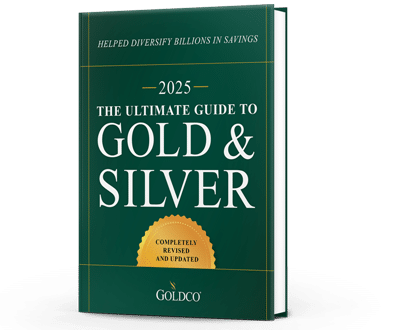How to Set Up a Gold IRA Account
Unease about the future of the US economy is growing, as a weakening labor market and persistent inflation are helping fuel fears of a potential recession With the spectre of 2008 at the back of many...
Precious Metals
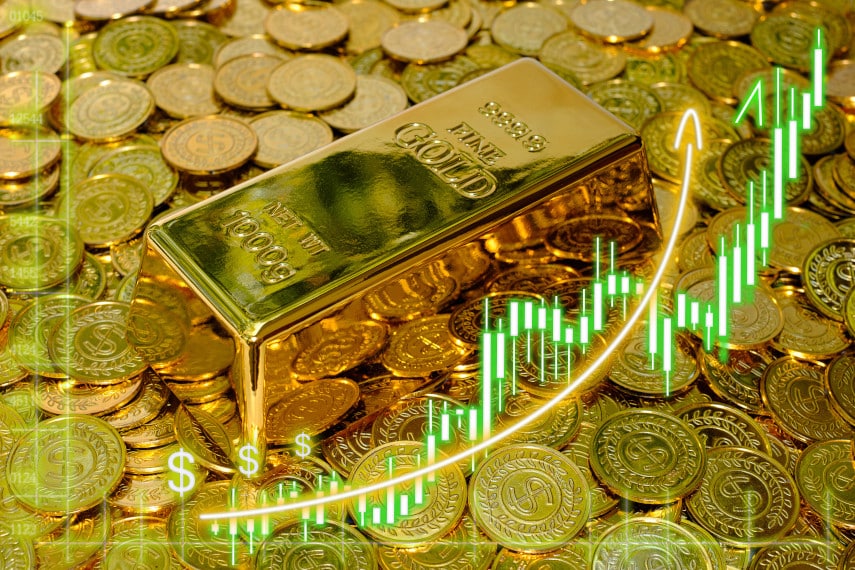
Saving money and growing your assets can be nerve-wracking. Everyone wants to make money, and no one wants to lose any, but that’s easier said than done.
You know that the prices of the assets you own can swing either way. And so it may be tempting to constantly check on the value of your assets and get nervous about short-term price drops.
If you’re trying to build up wealth over the long term, however, you might want to remember to be patient. Saving up money for long-term goals can often mean being calm and level-headed.
Still, no one wants to buy a money-losing asset, and so paying attention to their value can be important to getting ahead in the long term.
If you’re looking to add precious metals to your portfolio, you may be wondering what the general trends in precious metals prices are. And if you’ve followed the gold price over the past few decades, you’re probably familiar with gold’s tremendous price growth.
But not everyone has 20-30 or more years to benefit from a gold price increase. What if you’re only planning to buy gold and hold it for 5-10 years or so?
Will the gold price go up during that time period? If so, how much and for how long?
These are understandable questions to ask, even if they can’t be answered with any definite certainty. But understanding what factors influence the gold price and figuring out how those factors may play into the value of your gold holdings over your expected time horizon can go a long way toward helping you figure out if the price of gold will go up.

Like the price of any other metal, the gold price is subject to the laws of supply and demand. The relationship between the supply of gold and the demand for gold can influence which way the gold price moves.
Let’s look at a few of the factors that drive demand for gold.
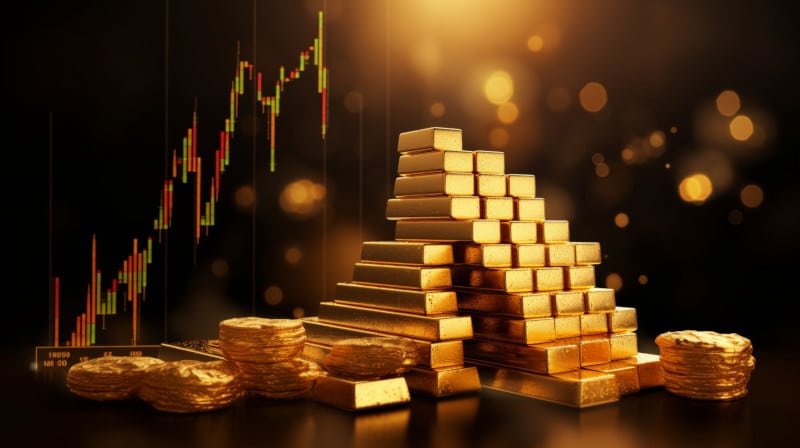
While gold has industrial uses, its primary use for centuries was as a monetary metal or for jewelry. Even today, market demand and jewelry demand play a primary role in overall gold demand, while industrial demand plays a far smaller role than it does for other precious metals like silver, platinum, and palladium.
In any given year about 80% of gold demand comes from a combination of jewelry and market demand. Demand in these sectors can be very price sensitive, with falling prices often stimulating demand and rising prices dampening demand.
But when rising prices are the result of increased safe haven buying, sometimes gold demand increases despite rising prices. And that rising demand can even bring about periodic supply shortages.
Lack of physical gold supply could end up becoming a constraint in the future, particularly if gold demand climbs for any reason, including a possible recession.
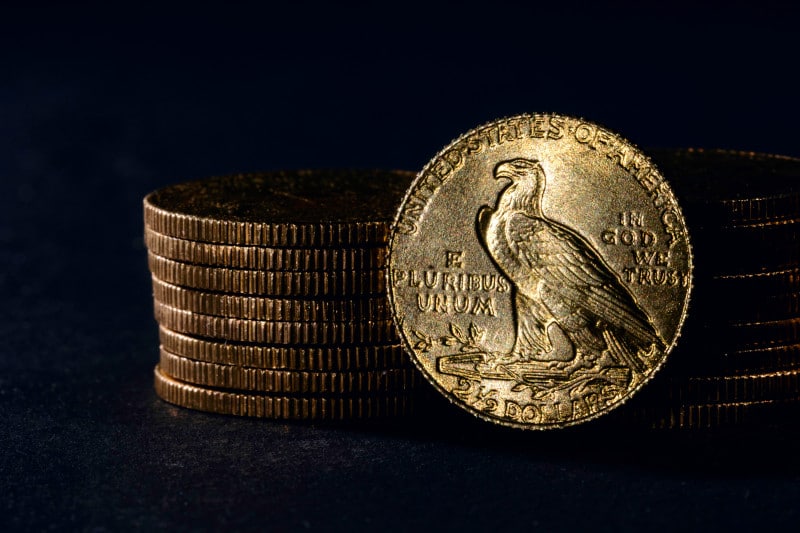
Gold coins and bars are one of the most popular and best known methods of buying gold. While gold coins never really circulated in commerce on a regular basis, there’s still a mystique about them that many people may find appealing.
The downside to gold is that the price is so high, which can seem like a pretty significant barrier to entry. And it can be pretty disheartening to buy thousands of dollars of gold and find that it’s only a handful of coins.
But that density of wealth can also be one of gold’s major attractions.
$50,000 worth of gold can easily fit in your pocket, and hundreds of thousands of dollars of gold can easily fit in a purse. That has made gold a compact store of wealth that has been relatively easy to protect and easy to transport.
Exchange-traded funds are another popular method that some people use to gain exposure to the gold market. But there are some important disadvantages of gold ETFs that many people may not be aware of.
Perhaps most importantly, owning shares in a gold ETF doesn’t give you ownership of any physical gold, nor can you convert your shares into physical gold. There are also questions surrounding the ownership of gold by ETFs, and whether or not any of that gold is encumbered, hypothecated, etc.
Despite all those potential questions, there’s no question that sales and purchases in the ETF market impact the gold price. But moves in gold ETF markets don’t always parallel moves in the coin and bar market.
While gold has uses in industry, especially in electronics, industrial demand for gold plays a relatively small role in overall gold demand. That isn’t to say that someday gold might not be in greater demand, but right now gold demand from industry remains relatively stable, and has a relatively minor impact on the gold price.

Gold jewelry demand is the major competing driver to market demand when it comes to overall gold demand. However, a significant portion of gold jewelry demand is actually driven by its role as a store of value.
India has traditionally been one of the largest consumers of gold, and people from the Republic of India often prefer to hold their gold in the form of jewelry. The Indian wedding season, in particular, is normally a sign of increased demand for gold jewelry in India, as newlyweds are gifted gold jewelry to help establish their family wealth.
Many temples in India are also beneficiaries of gifted gold jewelry, with some of them sitting on massive stockpiles of gold. So don’t think of gold jewelry just as baubles, but as a potential proxy for gold market demand in foreign countries.
Like silver, there are two primary sources of gold: gold mining and recycling of above-ground gold.

Gold mining is the dominant source of gold supply, accounting for 75-80% of gold supply in any given year. Gold mining is notoriously difficult and energy intensive, with an average grade gold mine producing 5-8 grams of gold per tonne of rock mined.
That means that if you purchase 10 ounces of gold, it could have taken 60 tonnes or more of rock to produce that. Multiply that by the amount of gold produced every year and you have an idea of the massive amount of effort that goes into mining gold.
Gold mining remains relatively steady year to year, with total mine production being higher than it was 10 years ago, but down from its 2018 highs. In the absence of major economic or political instability, expect gold mine production to remain relatively constant.
Gold recycling makes up the remainder of gold supply, and can take many forms. Existing jewelry and coins can be bought up and melted down to create new ingots or coin blanks, and electronics can be recycled for their gold content.
If you’ve ever taken a look inside a computer, you’ll see the gold plating on the pins of CPUs and other chips. While there isn’t much in a single computer, bulk electronic recycling can reclaim larger amounts of gold.
Gold recycling is down about 25% from its 2010 peak, and the long-term trend seemed to indicate that less and less gold would be recycled. But there has been an uptick in gold recycling recently, perhaps due to higher gold prices.
If gold prices continue to rise, that could pull more and more gold off the sidelines and into the recyclers’ smelters. That could supplement mining production and ensure that gold supply and gold demand remain in equilibrium.
Long-term trend forecasting of gold demand is difficult due to the cyclical nature of gold markets. Many end users and purchasers of gold are sensitive to changes in the gold price, and for many a higher gold price will dampen demand.
The jewelry sector, for instance, often sees reduced demand for gold as the price increases. But when those price increases occur as a result of increased market demand, that increased market demand can make up for the decline in demand from the jewelry sector.
During the stagflation of the 1970s gold saw annualized growth of over 30% per year over the course of the decade as many searched for growth during an era of market weakness. If the US economy were to fall into stagflation or severe recession, what might a similar rise in the gold price do to gold demand over the next decade?
Jewelry demand might very well plummet, as more expensive gold would make it more expensive to produce jewelry. But market demand could increase, despite rising prices, if gold ends up being seen as a growth asset.
We’ll just have to keep our eyes open and see what developments occur in markets and in the broader economy that could impact the gold price and gold demand.
Given the relative stability in gold supply over the past several years, there’s nothing to indicate that gold supply will drop anytime soon. Attempting to forecast changes in gold supply would therefore be difficult.
The big thing to watch for is if gold supply can’t keep up with gold demand in the next few years. If gold demand picks up and gold supply can’t keep up, it could put upward pressure on the gold price.
But if gold supply ends up rising due to higher gold prices, it could limit how high gold prices rise. In either case, looking at supply and demand figures could be a good indicator of which way gold prices might move.
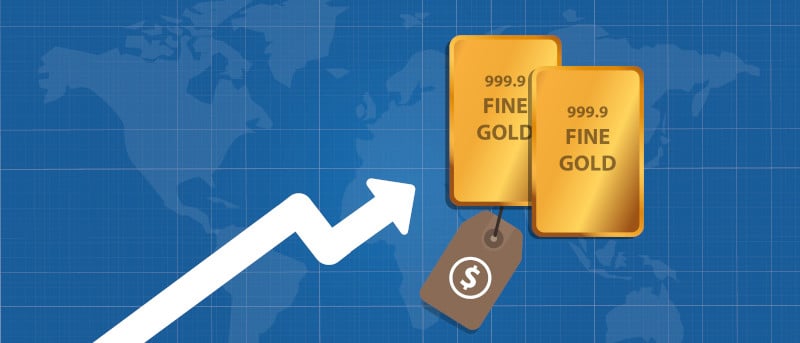
Forecasting the future price of any asset, let alone precious metals, is difficult. Given the long history of gold as a monetary metal, a safe haven asset, and an inflation hedge, and gold’s price history over the last 50 years, the gold price in the future could very well be higher than it is today.
But will the gold price be higher within the time horizon in which you’re looking to own gold? 50 or 100 years from now, the gold price could certainly be higher.
But what about 5, 10, or 20 years from now? That’s a tougher question to answer.
If you look at gold price prognostications from analysts, you’ll find predictions that are all over the map. Some are bullish, with some like commentator and analyst Jim Rickards declaring that gold could reach over $27,000 an ounce.
Other analysts are bearish, expecting gold to fall to below $2,000 an ounce. And others, such as Bank of America, JPMorgan, and Goldman Sachs, assume mild growth consistent with the status quo, expecting gold to hit up to $2,900 an ounce by mid-year next year.
At the end of the day, you’re going to have to read those opinions, judge which way you think gold is going to move, and make your decision whether or not to buy gold accordingly.
Many Americans are looking anxiously at developments in the economy, and looking nervously at their wealth. There seem to be growing parallels between what’s happening today and what happened prior to the 2008 financial crisis.
With the Federal Reserve having just begun an interest rate cutting cycle like it did in September 2007, could we be on the cusp of another 2008-style crisis? Many people worry that we are, and the idea of buying gold to try to safeguard their wealth ahead of any possible recession may occur.
Ultimately the decision whether or not to buy gold is yours to make. If you think the economy is fine, and if you trust Jay Powell and the Federal Reserve to engineer a safe landing, then maybe gold isn’t the thing for you.
But if you think the economy is headed toward a rough spot, and you’re worried about how your savings may fare, maybe it’s time for you to start looking into diversifying your assets with gold.
With over $2.5 billion in precious metals placements, Goldco has helped thousands of customers benefit from owning precious metals. And our more than 6,000 5-star reviews from our satisfied customers is a testament to our dedication to making ourselves one of America’s best gold companies.
If you want to learn more about how gold can help you, call Goldco today to talk to one of our precious metals specialists. With over a decade of experience and a commitment to customer service, let us help you explore how you may be able to safeguard your hard-earned savings with gold.
This article was originally published in December 2022 and was updated in October 2024.
